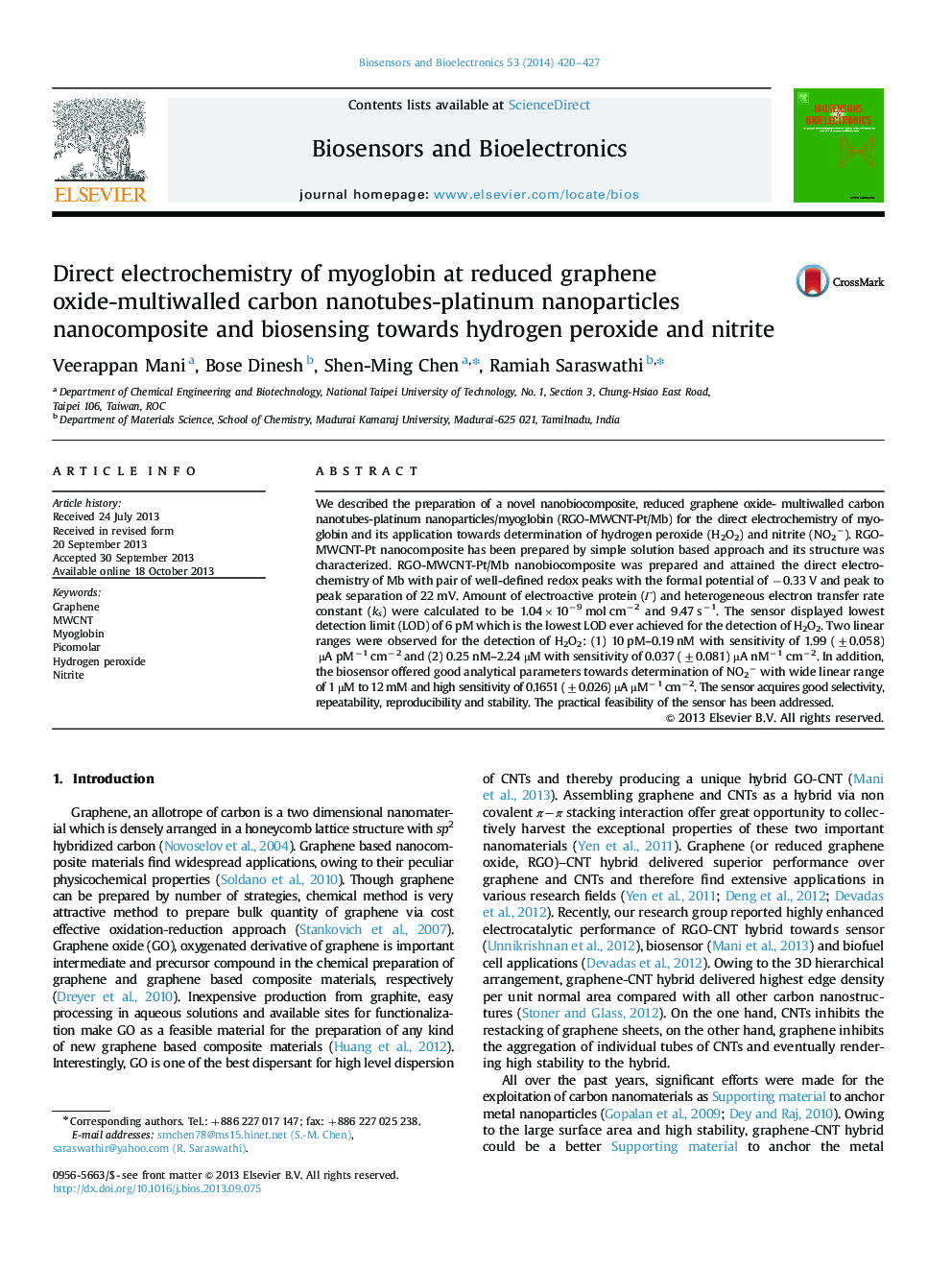| Article ID | Journal | Published Year | Pages | File Type |
|---|---|---|---|---|
| 866721 | Biosensors and Bioelectronics | 2014 | 8 Pages |
•Synthesis and characterization of RGO-MWCNT-Pt nanocomposite.•Direct electrochemistry of Mb at RGO-MWCNT-Pt/Mb nanobiocomposite.•Biosensing towards H2O2 and nitrite, picomolar detection of H2O2.•Practical feasibility of the biosensor.
We described the preparation of a novel nanobiocomposite, reduced graphene oxide- multiwalled carbon nanotubes-platinum nanoparticles/myoglobin (RGO-MWCNT-Pt/Mb) for the direct electrochemistry of myoglobin and its application towards determination of hydrogen peroxide (H2O2) and nitrite (NO2−). RGO-MWCNT-Pt nanocomposite has been prepared by simple solution based approach and its structure was characterized. RGO-MWCNT-Pt/Mb nanobiocomposite was prepared and attained the direct electrochemistry of Mb with pair of well-defined redox peaks with the formal potential of −0.33 V and peak to peak separation of 22 mV. Amount of electroactive protein (Г) and heterogeneous electron transfer rate constant (ks) were calculated to be 1.04×10−9 mol cm−2 and 9.47 s−1. The sensor displayed lowest detection limit (LOD) of 6 pM which is the lowest LOD ever achieved for the detection of H2O2. Two linear ranges were observed for the detection of H2O2: (1) 10 pM–0.19 nM with sensitivity of 1.99 (±0.058) µA pM−1 cm−2 and (2) 0.25 nM–2.24 µM with sensitivity of 0.037 (±0.081) µA nM−1 cm−2. In addition, the biosensor offered good analytical parameters towards determination of NO2− with wide linear range of 1 µM to 12 mM and high sensitivity of 0.1651 (±0.026) µA µM−1 cm−2. The sensor acquires good selectivity, repeatability, reproducibility and stability. The practical feasibility of the sensor has been addressed.
